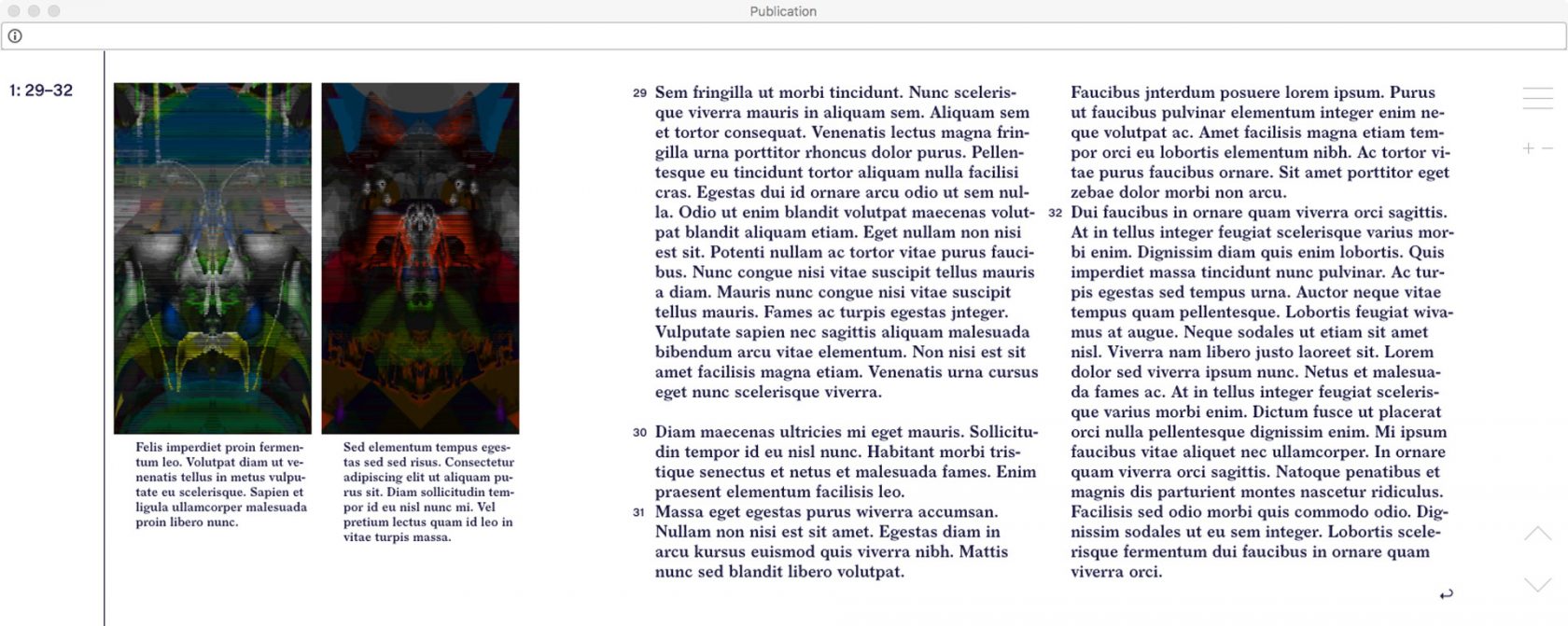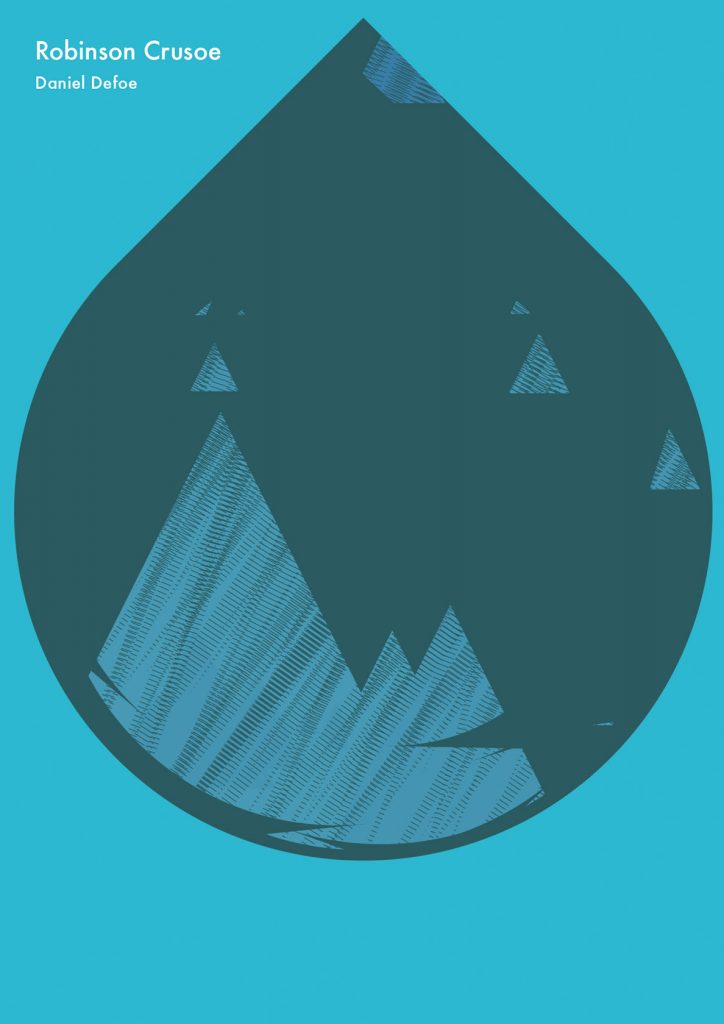Gestaltung
Prof. Sascha Lobe

Codex is a format and design concept for text-based digital publications. Based on the format and font size used, the program calculates a fully fledged layout based on a uniform grid, without creating random white spaces. The content is automatically formatted so that individual elements never get higher than the screen. Related texts are distributed over several columns. This allows the publication to be navigated in concrete steps. However, unlike the current e-book format, the metaphor of an analogue page, which one browses, is dispensed with. The entire content is arranged on a continuous surface without artificial breaks. The reader is thus able to get a quick overview. Since the content differs depending on the combination of font size and screen size, the individual paragraphs are numbered for orientation purposes.
In addition to the automatic segmentation of the content, Codex also makes specific layout decisions that, for example, affect the orientation of the elements in the grid. Instead of making absolute design decisions for fixed dimensions, as is customary in print design, dynamic rules are defined to which the content responds. An individual layout is generated for each format.






Theorie
Prof. Dr. Hans Zitko
„Wem gehört die Marke?“(1) lautet die Überschrift eines Kapitelabschnitts aus der 2013 aktualisierten Ausgabe von „Corporate Identity & Corporate Design“, das sich mit der Gestaltung von visuellen Erscheinungsbildern auseinandersetzt. Als Grund für die Neuauflage wird unter anderem angeführt, dass sich das Verhältnis von Konsumenten und Unternehmen stark verändert habe. In der Publikation wird das Bild eines Verbrauchers gezeichnet, der sich durch die Möglichkeiten des Internets zur Überprüfung der Aktionen von Unternehmen und zur Meinungsäußerung vom passiven Rezipienten zum aktiven Teilnehmer der Identitätsproduktion einer Marke gewandelt hat. Er hinterfragt und äußert sich kritisch, weshalb Gestalter von Corporate Designs vor neuen Herausforderungen stünden: „Markenwerte zu schaffen wie Vertrauen, Ehrlichkeit und Glaubwürdigkeit ist wichtiger geworden, als Identitäten und ihre Botschaften zu visualisieren.“(2)
In meiner theoretischen Diplomarbeit gehe ich der Frage nach, wie sich die Suche der Konsumenten nach diesen neuerkannten Werten auf die Gestaltung von visuellen Erscheinungsbildern auswirken kann und welche mögliche Position dabei der Betrachter einnimmt. Dies wird insbesondere am Beispiel von dynamischen Erscheinungsbildern (im Kontrast zum statischen Logo) analysiert. Als Grundlage für meine Ausführungen beziehe ich mich dabei hauptsächlich auf Theorien zur Rezeptionsästhetik von Roman Ingarden und Wolfgang Iser.
1,2: Beyrow, Matthias; Kiedaisch, Petra; Daldrop, Norbert W.: Corporate Indentity & Corporate Design. Das Kompendium, 3. Auflage, Stuttgart: avedition, 2013
Visuelles Erscheinungsbild






Prof. Sascha Lobe
Syntax is a research project developed in the 2010/11 winter semester as part of my preliminary diploma course. The point of departure was the topic illiteracy and as such associated with the question of the extent to which the structure of a text reveals something about its content.
Syntax is a computer program written in Processing. It analyses the structure of a text and translates the data into basic parameters such as complexity, rhythm and emotionality. Following this, strings of distinguishable graphical shapes (aka words) are counted and sorted according to their usage to guess their importance. Then graphics are generated based on these results. Their construction does not comprise any kind of coincidental parameters. Syntax determines pattern, coloring, layout as well as the number, position and character of the individual shapes and the size and font of the title.
The aim of this visualization is not to render data legible as statistics, but to propose an image, that can be linked to the text’s content and to make it possible to compare different texts from the same author to find similarities.
32 English-language texts were analyzed, of which 12 were presented as printed book covers. Each consists of a graphic on the front cover, a summary list of the analysis results on the inside of the back cover and the longest of the sentences, that in addition containes the most used word, on the back cover. The width of the book’s spine is proportional to the length of the text.










